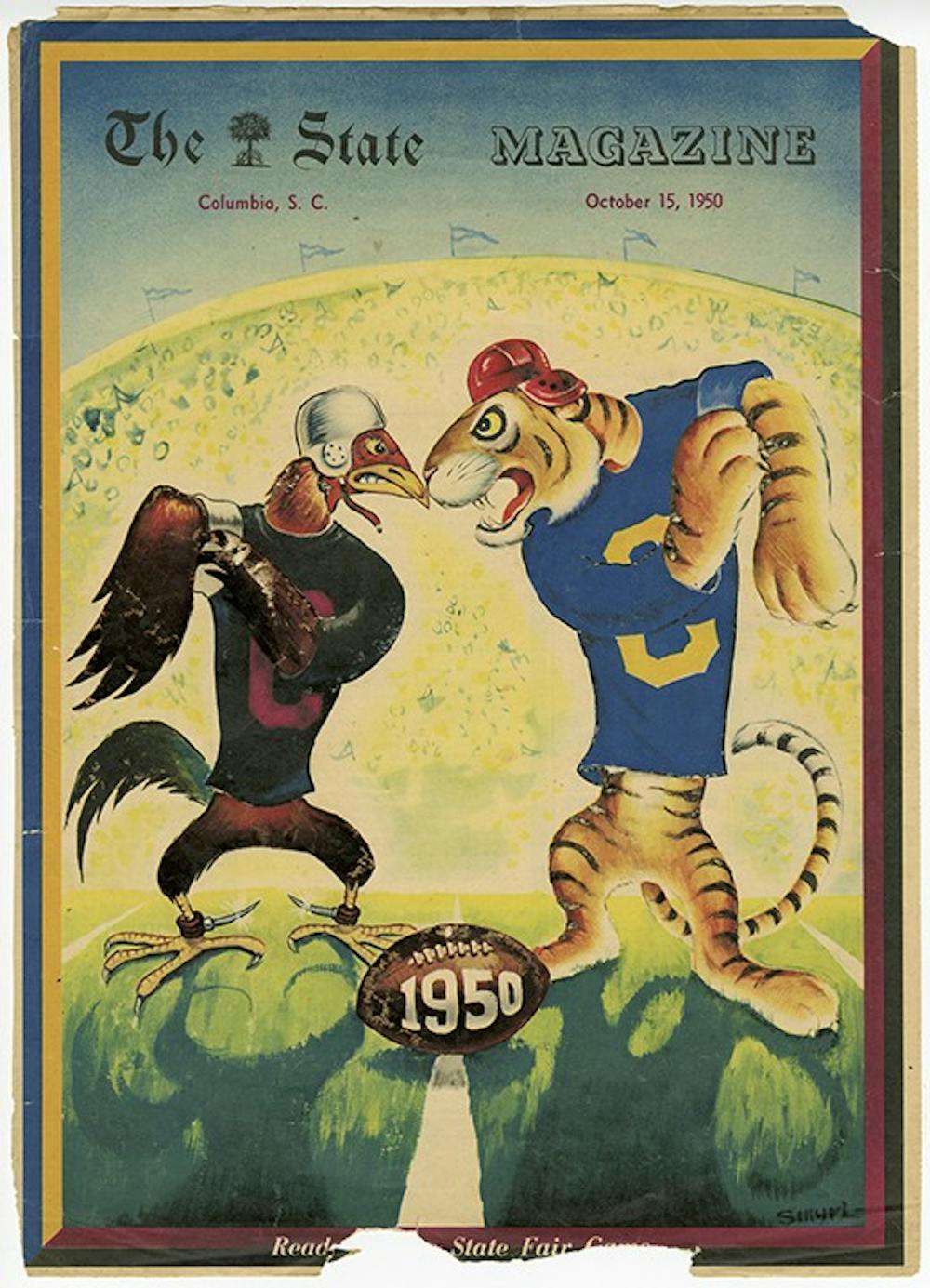USC alum, cartoonist and journalist Jak Smyrl will be memorialized in a new biography.
Joan A. Inabinet co-authored "The World of Jak Smyrl: South Carolina Artist, Journalist, Cartoonist" with her husband, L. Glen Inabinet, and their book is expected to be released this month. According to Joan Inabinet, Smyrl was more than just a talented artist, and he lived a life full of "varied," fulfilling experiences.
“He used to like to point out that he was born in the 1920s," Joan Inabinet said. "He grew up in the Great Depression, and then he became a man during World War II, reached manhood in World War II, and then here you are with the postwar era when he’s going to USC.”
In addition to his time as a soldier during World War II, Smyrl was a traveler who made a trip around the world to 20 countries in 80 days with his wife, Betty.
Joan Inabinet said Smyrl got into journalism when he was in high school, where he joined the school newspaper. He later went to Auburn University for one year, where he studied art and worked on the student newspaper before he was drafted.
“Auburn was the one school where he could get in his qualified military training, and it offered art, and that’s what he wanted to take,” Joan Inabinet said.
Joan Inabinet said Smyrl didn’t lose his love for drawing while he was deployed.
“He entertained friends when things got really scary and bad in combat and stuff. He would try to cheer up people and, you know, draw pictures for them. When he met people who did not understand English, he would communicate with them through drawing pictures,” Joan Inabinet said.
Glen Inabinet said Smyrl’s correspondences from during the war reflected his passion for drawing.
“His letters often embellished with art, both on the envelope and inside. His way of communicating in part was by writing verbally, but also doing little sketches and things like that,” Glen Inabinet said.
Edward Blessing, head of user services and curator of published materials at the South Caroliniana Library, discussed Smyrl’s academic career after coming home from the war.
“He also went up to Pittsburgh, and he studied there, but being up in Pittsburgh — it was not a friendly place to live in the '40s for a Carolina boy, and he … came back to South Carolina and Columbia, and I think he revitalized by being in the sunshine,” Blessing said.
Glen Inabinet said Smyrl got his beginnings at The State newspaper in Columbia. It was November of Smyrl’s senior year at USC when he ran into an old friend from Camden who worked at The State and encouraged him to apply for its artist position.
“He applied for the position, and it was a full-time position starting immediately, so he was unable to finish college,” Glen Inabinet said.
Joan Inabinet said Smyrl later described the job at The State as his “dream job.” She said Smyrl had a long career with The State.
“With a career of 37 and a half years at The State newspaper, basically he was the first artist the paper had ever had, and he was the only artist for most of that time,” Joan Inabinet said.
Joan Inabinet said the nature of a cartoonist’s work was much different than now.
“Since he was the one artist that The State paper had for many, many years, he did all of what computers now do with technical, a lot of technical things,” Joan Inabinet said.
In addition to his work at The State, Smyrl, who previously worked at The Daily Gamecock, did a lot of his work in relation to USC. He often published annual pieces about the South Carolina-Clemson rivalry, and he also created the first fighting Gamecock logo.
“Jak had designed a gamecock just as something after he was out of USC. He designed the first fighting Gamecock logo, and he just designed it for the Gamecock club and it just took off,” Joan Inabinet said.
Henry Fulmer, the director of the South Caroliniana Library, said Smyrl left a positive impact on his audience.
“Everyone who read The State newspaper was familiar with Jak Smyrl’s work, and because a lot of it was cartoon in nature, not every bit of it, but much of it was; it had popular appeal and it became something that was, the phrase that was often used was that he was every man’s artist, every person’s artist,” Fulmer said.

